What is the best head position to have during a deadlift? Should your shins be vertical or not when you pull? Let’s find out.
Recently Coach Mark Rippetoe put an article on the deadlift where he listed 7 crucial aspects on technique that he believed were important to follow (you can find the article here). I disagree with 2 of them. I also want to mention that I have a lot of respect for Rip. His book Starting Strength has an excellent breakdown on the big lifts and serious lifters should check it out. On the few situations where we have had occasion to interact he has always been friendly and polite to me. And as an author in the fitness industry I will freely admit to being a bit envious of the success he has had – indeed some of the goals I made for myself with All About Powerlifting regarding sales were in part based off of his success with Starting Strength. To be clear this is not a personal attack against the man. This is two coaches disagreeing on aspects of technique. Just because you disagree with someone on certain points doesn’t mean you dislike them. And while I do think most of the time lifters should focus on the key points that most coaches agree upon, I also think an educated third party observer – you in this instance – can learn when two coaches disagree on a subject.
Head Position
There are two main schools of thought in regards to head position in the deadlift. One is that the head should remain in neutral position with the neck essentially being in a straight line aligned with the trunk. The second is that you should actively extend your neck (lift your chin) while performing the deadlift. Of note most people often describe these two positions by saying either “look down” or “look up” but that is overly simplistic because the eyes have a great deal of freedom where they can gaze regardless of head position. It is much more explicit to talk about chin position. Should the chin be in neutral position or is it held high? Deducing this is easy to see in almost every deadlift video you’ll watch, particularly if you pause the video at certain points. I also think there are two key parts of the lift to really focus on in terms of head position. The first is when the bar is at or around knee height, the second is just before lockout.
I don’t believe there is really any debate about this at all. You should definitely “look up” when you deadlift – meaning you should hold your chin high (neck in extension). Why do some people think you should keep your head in a neutral position?
Rip gives 3 reasons why he thinks you want to avoid the chin high position.
Point 1 – He argues that since the head is 5-8% of your body weight and that you since you want your shoulders in front of the bar (which is correct) keeping your head in front of the bar will actually make the lift easier.
This is a 100% incorrect and pretty easy to prove. He is saying the head somehow has a counterbalance effect on the lift, in which case a bigger, heavier head would actually make the lift easier since it would then be more of a counterbalance. The problem is the deadlift (when looked at as whole) is a third class lever, not a first class lever – it doesn’t operate like a seesaw. The primary fulcrum in the deadlift is the hips, so the farther any weight you are lifting is from the hips the harder this is. There is an easy way to visualize this. If you have ever used a neck harness you know that once you get up to 25 or 45 lbs or more just lifting the weight off the ground is a bit of a challenge. If his point was correct then wearing a neck harness with weights attached would actually make a deadlift easier by improving the counterbalance, but of course this is false, it would make the deadlift much harder. If you increase the lever arm by putting something sturdy like a broomstick behind your neck and then hang weights from the end of it (yes I actually did this to make sure this point is correct – you can see my goofy pic below) it becomes vastly harder to stand up, not easier. You want as much of the resistance you are lifting to be as close to the fulcrum as possible.
Point 2 – He argues that ‘almost all of the traps insert on the spine of the scapula’. This is partly correct. Some of the traps do insert on the spine of the scapula (mostly mid traps) but the upper traps insert on the lateral third of the clavicle and the acromion process. A muscle can best resist force when it is in the shortened position (armwrestlers don’t start in the lengthened position and then try to win) and muscles work the best when their fibers are in a straight line. The traps, particularly the upper and mid traps, are hugely important in a deadlift. They have to stabilize the shoulder girdle and prevent it from curving too far forward. If that happens the lifter will be at the point of no return where they might stand up with the bar but they will be unable to lock it out and their shoulders will be too protracted. Because the spine of the scapula is on top of the bar, by lifting the head you put the upper trap fibers in a straight line to help pull the bar up. If the head is forward of the bar the traps are less optimally aligned to help you pull.
Point 3 – Rip suggests that looking up which shift your center of gravity forward and you’ll go forward on your toes. It is a nice theory but I haven’t really seen to be this case. If YOU are falling forward continuously while you pull then you might want to play with your head position a bit. It is worth noting that tucking your chin literally on your chest will really put the weight in your heels, then is that ideal position? The movements in a deadlift are pretty slow and one can shift their weight reasonably easy with the head up or down, I would suggest one just needs to practice a bit and the proper form will come. The simplest cue to keep the weight in your heels is to lift up your big toe as that also shifts all the weight into the back of your foot. Now you can have your head up and your weight in your heels.
What is the argument in favor of keeping the chin high, particularly when the bar is at knee height and just before lock out? In my mind it is pretty extensive.
First, this is how almost all good lifters do it. Some people may be quick to scream ‘but that is broscience’, I disagree. If I said “well, this one good lifter did it this way,” and that was my justification – that would be a weak argument. But when almost all good lifters are doing the same thing – in a sport where essentially nothing matters but performance and the only thing you can measure is results – that is a mountain of evidence.
Ironically Rip uses several pictures and videos of lifters to highlight his key points. Interesting, almost all of them keep their chin high. In the first three still pictures of the article the lifter (or runner in one instance) has their chin high (As a fellow T-nation author I know the authors don’t always pick the pictures that goes with their articles).
Then he shows a video of Brad Gillingham and Mike T, both of whom hold their chin high at the 2 points in the lift I mentioned (chin high doesn’t mean looking up at the ceiling – if your body is at a 45 degree angle forward and you are facing directly forward, your chin is high). The next video is Ed Coan who very actively lifts his head and raises his chin during the lift. The last picture is of Roger Estep (also featured in All About Powerlifting) whose chin is high before he even begins the pull. Indeed the only lifter featured that doesn’t keep his chin high is KK, who has a reasonably unorthodox pulling style.
Sticking within the sport of powerlifting, the last Arnold I went to I keep track of all the lifters and their chin positions as the Arnold Deadlift Expo. 75% of the lifters had a chin high position when the bar was at knee height. This is a tough competition that you have to qualify before, it is only for elite pullers. I’ve likely attended over a hundred powerlifting competitions and when a lifter gets stuck on the deadlift you never hear someone in the audience call out “look down” during the pull but often you will hear “look up” and sometimes you can literally see that make the difference it makes in the lift.
If we go outside of powerlifting, what sport is most like us? Olympic weight lifting, where lifters are doing a version of the deadlift every time they pick up the bar. It would be an extreme rarity to find a proficient Olympic weight lifter maintaining neutral head position during the pull of a snatch or a clean, they essentially all look up (in Rips article the 2 weight lifters he references display very significant neck extension). In his video on proper technique Jim Schwartz cues and demonstrates the chin high, looking up position.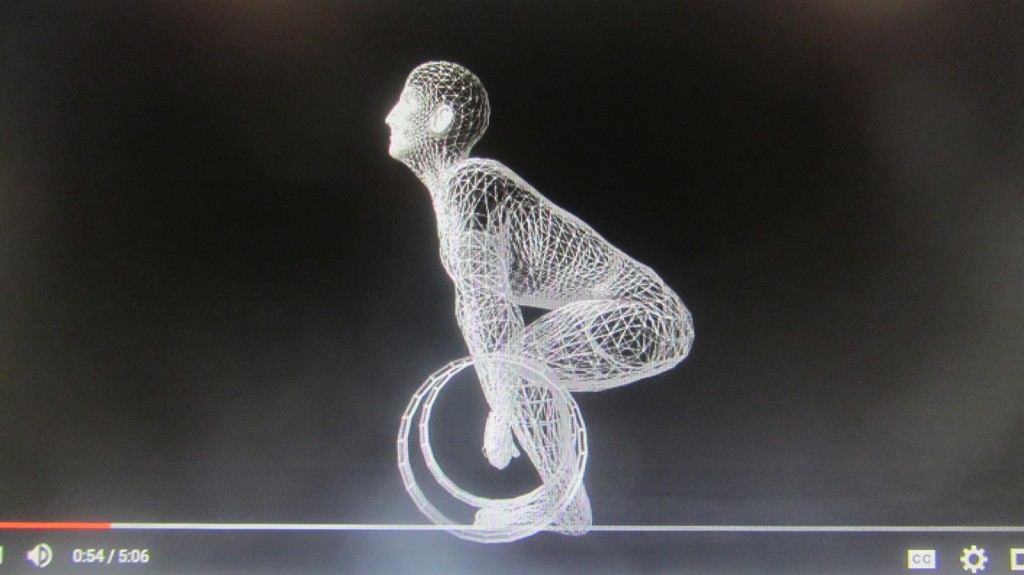
You will also find the chin high position when most athletes perform a vertical jump (which is very similar mechanically to a deadlift) and when athletes do gymnastic moves that involve a release of power. Mel Siff, author of Supertraining, also argues for the chin high position, stating that it helps the erectors create a more powerful contraction. And what is one of the most important muscles in the deadlift – the back!
I personally don’t care what YOU choose to do with your head. If you want to deadlift with your chin buried on your upper left pec, so be it, and if it works for you, great. I want you to lift the most weight possible. If you want to lift the most weight, then your go to position should be to actively hold your chin high when you are pulling, particularly when the bar is at knee height or above. Again, if you don’t want do that, fine, it is no skin off of my back. But don’t go around telling people that are lifting that way that they are wrong. You are in the significant minority if you want to insist on maintaining a neutral head position while deadlifting.
It is safe?
Honestly I am not sure if it is safer or not to look up. I believe it is and I believe so mainly because the body has evolved to make its most natural biomechanical position to also be the safest in the vast majority of instances. But I don’t know for sure. And to be very clear, they don’t know either. If someone tells you that neutral head position is the safest in a deadlift, that is just a guess. And since the head is not under any direct load in the deadlift, my guess is both positions are reasonably safe. In the thousands and thousands of heavy deadlifts I have witnessed – in the gym, at powerlifting competitions, those which I’ve done myself – I don’t remember any instance where a lifter grabbed their neck in pain after the lift was done. If you twist your neck (look to the side) during a deadlift then that is a problem because that will also twist your shoulder blades and your perhaps your spinal column and injury can occur in that situation. But as long as your head is looking forward, I don’t believe looking up or looking down or looking straight ahead will be any safer for your neck and I see no biomechanical or anatomical reason why it should.
Shin Position
In his opening bullet points Rip states that:
A correct deadlift will start with the bar about one inch from the shin, placed with the shin in a perfectly vertical position (emphasis added).
Really, perfectly vertical? As in my shin should be pointing exactly straight up and down? I don’t think so, and I am not really sure he thinks so either.
I do agree that when you approach the bar as you set yourself up and you are standing, you want your shin to be about an inch away from the bar. Again, when you are standing. However when you bend down your shins will push forward – exactly how much will depend on your biomechanics but the shins will push forward – and now your shins will be touching or very near touching the bar. If you are standing and your shins are touching the bar at that point then when you bend down you will push the bar forward and I agree, we don’t want to push the bar excessively forward, that is a big no-no deadlift. But you definitely don’t want to have perfectly vertical shins. My issue is really with that word ‘perfectly’ vertical. If he had just said reasonably vertical or “don’t push the shins as far forward as you would in the bottom of a squat” I would take no issue with those statements. But perfectly vertical implies that the bone in my shin is making a perfect, 90 degree angle with the ground. Remember according to him the bar should be 1 inch away from the shins and also according to him the bar must travel in a perfectly straight line. This means the bar must travel up the shin, staying one inch away from the shin, the entire time until lockout. Anybody who has ever pulled knows you don’t want the bar to stay an inch away from your shins when you are pulling, and a legion of bloody and scarred shins from deadlifters make this apparent.
You start with the bar about an inch from your shins when you are standing. You descend into position, pushing your shins forward until they touch or almost touch the bar. Your shins are now close to vertical but not exactly vertical, for most people they will be at a 70-80 degree, with 90 degree being perfectly vertical and a 0 degree being parallel with the floor. As you pull the shin will straighten out because the knee will extend. The bar does go up in a straight line and the shin is straightening out simultaneously so the shin “gets out of the way” right as the bar is contacting it.
Two very important points about this. There is already a deadlift where you want a perfectly vertical shin the whole time – it is called a Romanian Deadlift (RDL). Indeed the one rule in an RDL is you can bend your knees as much as you want but the knees can’t travel forward. This in turns means you are sticking your butt out behind you excessively. A great cue to help with proper form in an RDL is to think about getting your tailbone and your chin as far away from each other as possible (note this also means raising the chin up). An RDL is a great exercise but everybody knows an RDL is harder than a conventional deadlift. Why is it harder?
This brings us to the second key point. If your shin is truly vertical when you start the deadlift, then there will be no active knee extension. There will be passive knee extension as the femur moves forward (hip extension) but no active knee extension. What does this mean in simple terms? It means your quads, the only muscle that performs active knee extension, can’t contribute to the lift. Do we care? We should, given that the quads are one of the strongest muscles in your body and in this lift they are in a particularly strong position (think how easy a quarter squat is, that is what your legs should be doing in a deadlift). And that is exactly why we cannot lift as much weight with an RDL. All the other muscles that help you do a regular deadlift are still working in an RDL, minus the quads. And given that most people RDL about 10% less than their conventional deadlift, that is a lot of pounds to leave on the platform.
Now I mentioned before that I am not even sure Rip actually agrees that the shins should be ‘perfectly’ vertical. He did include this graph (which I would be very confident comes directly from him and is not a random T-nation graph they stuck in the article) and I have no issues with this graph at all, other than describing the angle of the tibia as perfectly vertical.
Am I being crazy picky by not wanting to call the shin perfectly vertical? My guess is if Rip and I were both watching someone deadlift we would have them start in a reasonably similar position and it would probably look like the graph. The problem is someone else reads that key technique point (but doesn’t look at the graph), memorizes it, and then regurgitates it to other lifters online and in the gym. Now we have an issue as that person is really trying to enforce that perfectly vertical shin position and is essentially putting the lifter in the bottom of an RDL and wants them to lift heavy. Not good.
Once again Rip’s references in the article don’t match the guideline he stated. The impressive video of Marcin Dolega snatching about 440 lbs start with his shins very far forward (yes, it is a snatch, but he is still picking up 440 lbs off the ground). Brad Gillingham’s shins start about at the 75% degree position, reasonably vertical, yes; perfectly vertical, no way. Mike T does the same thing (note both of these great lifters are intentionally pushing their shins forward toward the bar just before the lift to ensure the shin is NOT directly vertical). Ed Coan also has his shins pushed forward a bit. The shin does move into the vertical position reasonably quickly – generally when the bar is a few inches off the ground (it must or the bar will smash into it) but it does not start in a ‘perfectly vertical’ position and that is not the goal position to be in. Remember the deadlift is much like a vertical jump, would you start a vertical jump with the shins in a perfectly vertical position? For a technique breakdown of a vertical jump, see the last video link referenced.
To reiterate, I have no desire to attack the man – I am giving my take on some key points on how to do the deadlift. It is also true that there is significant overlap with the technique he suggests in Starting Strength and what I suggest in All About Powerlifting. But there are some differences, certainly in suggested head position and also in how we would describe the ideal shin position. My hope is the lifter takes something valuable away from the discussion and ultimately lifts more weight as a result of it, whatever technique they happen to adopt – be it his, mine, or their own.
Olympic Coaching Tips: Clean and Jerk in Slo Mo (image at :55)
Biomechanics Vertical Jump Presentation (image at 3:10)


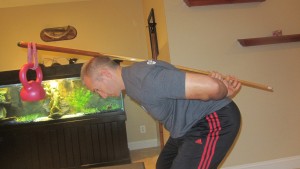


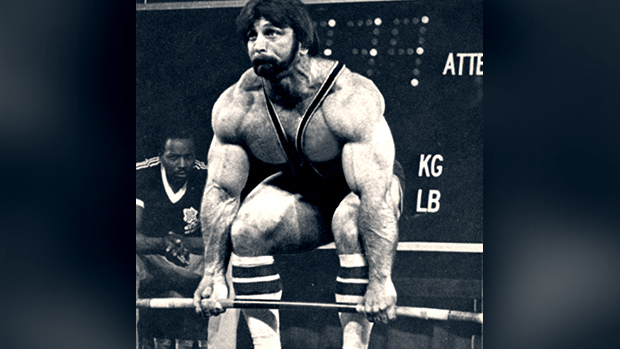
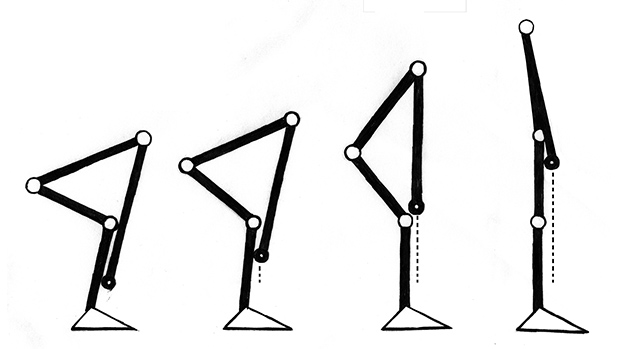
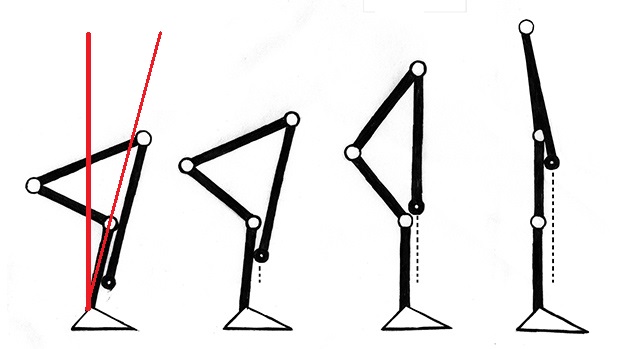






“Now I mentioned before that I am not even sure Rip actually agrees that the shins should be ‘perfectly’ vertical.”
You are correct, there has been a midunderstanding here. I believe he wants your shins to be vertical as the first step when setting up over the bar, and then later in the setup you drop your shins forward until they touch the bar. He DEFINITELY doesn’t want you to deadlift without the bar being in contact with the shins, and he doesn’t want you to deadlift with vertical shins.
To add to my previous comment, he actually talks about this in the very same article.
“A correct deadlift will start with the bar about one inch (2.5cm) from your shin, placed with the shin in a perfectly vertical position.” and then shortly afterwards “When this position is taken and the knees are dropped forward and out a little, so that the shins touch the bar without moving it and the knees stay parallel to the toes, the shin angle will be perhaps 7 or 8 degrees forward of vertical.”.
Pingback: Stuff To Read While You're Pretending To Work: 10/23/15
Pingback: Sunday Links: Deadlift, Psychedelics and Concussions | A Limitless Intention
The only potential issue that I can see in terms of keeping chin up while deadlifting is if someone is also looking up while doing this. If they are looking up while in the chin up position it may increase extension of the lumbar spine due to oral facial drivers. Think about how wherever you look, your body generally follows. So chin up and looking up may mean lumbar extension which can increase the chance for injury. Again, mostly educated guess and based on neurological factors more so than anything else.
Sorry mate, but ‘oral fascisl drivers’ is not a thing . Not sure where you heard that. Second , the deadlift is a an extension movement . How do you think most people injure their backs? That’s right, flexion. It is very rare to injure yourself from an extension injury . Now this is why the extended neck position is better for strength, as it allows as to keep our natural lumbar lordosis (extension) more easily. This is important , as naturally it’s hard to even keep a normal lumbar lordosis on heavy deadlifts . When was the last time you saw someone hyperextending their spine on a 800lb deadlift ? Probably never. Therefore extending the neck will activate the erector spine much more allowing for more powerful extension . Obviously the glutes and hams are the more powerful extensors, but having strong spinal extensors that are allowed to work properly takes a huge load off of the passive structures of the back such as the ligaments, which are still being worked anyway, just helped by that beautiful column of muscles next to our spines .
Not to mention, wrestlers are always taught to look up when completing lift takedowns such as high crotch lifts and double legs to carry their opponent higher and further
Ps I didn’t mean people don’t get injured from deadlift , I meant that it usually occurs when lifting with excessive spinal flexion , rather than extension .
This is not a scientific subject. It’s more psychological. Depends on the person. Chin up is probably right for about 80% of people. But there is that 20% with whom it may cause over extension. This is more of a “what works most safely for the individual” type debate. I myself, for example actually keep my chin very tucked and my spine always stays in perfect position. I know of several others in the same boat. An argument might be that I those others need to commit to safely practicing the head up technique. I’d argue that it’s pointless. Having your head up doesn’t increase drive. If having your head down helps you maintain proper position naturally, then this is the position you are going to safely produce the most drive from. End of story.